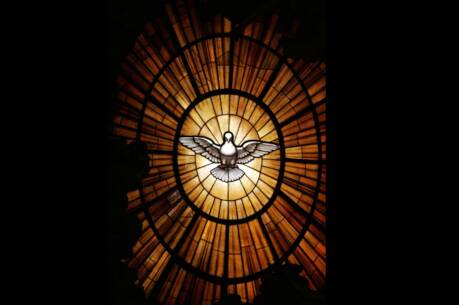The Holy Dwelling of the Most High
Today the readings for the Feast of the Dedication of the Basilica of St. John Lateran in Rome supersede those assigned for the Thirty-second Sunday in Ordinary Time. Built in the fourth century, this church remains a magnificent and lively place of worship today. It is the cathedral church of the bishop of Rome (the pope). The various Scripture readings revolve around the theme of the “temple” and illustrate the different ways in which that motif appears in the Bible: the Jerusalem Temple, the ideal temple, the person of Jesus and individual Christians.
The archaeological evidence for temples in the ancient world goes back many thousands of years. A temple was a place where a god was believed to be present in a special way, and where rituals honoring the god (especially sacrifices) were conducted. For a large part of ancient Israel’s history from Solomon onward, the Jerusalem Temple was the people’s central shrine and the only place where sacrifices were to be offered to Yahweh, the God of Israel.
Many of the Old Testament psalms celebrate the presence of Yahweh in the Jerusalem Temple. Indeed, the Book of Psalms is sometimes called the hymnbook of the Jerusalem Temple. We get a glimpse of how much the Temple meant to ancient Israel in today’s excerpts from Psalm 46. There the psalmist describes the Temple as “the holy dwelling of the Most High” and as Israel’s “stronghold,” its source of security, safety and hope because of Yahweh’s special presence there.
Nevertheless, the Temple built by King Solomon was destroyed in 587 B.C., along with the city of Jerusalem. The prophet Ezekiel was among the exiles in Babylon, and there he reflected on how such a catastrophe could have happened. While his book is full of denunciations and warnings, it ends on a note of hope when in Chapters 40 to 48 it provides a detailed verbal picture of the ideal New Jerusalem and its rebuilt Temple. The imagery of water in both Psalm 46 and Ezekiel 47 allude to its life-giving and life-sustaining power and its healing properties. Even after the Second Temple was built in the late sixth century B.C. and rebuilt in grand style under Herod the Great (37-4 B.C.), many early Jewish writers kept alive and embellished Ezekiel’s hope for a new and better Temple. The Qumran New Jerusalem texts and the Temple Scroll, as well as the New Testament Book of Revelation, are good examples of these hopes.
The Jerusalem Temple to which Jesus came, according to John 2, was a large complex of buildings whose Herodian refurbishing had been in progress for 46 years. We ought to envision the Temple not as one huge church building (like St. John Lateran or St. Patrick’s Cathedral in New York) but as a campus with many buildings and installations. By Jesus’ time, the Temple had become the major industry of Jerusalem. It employed construction workers and an administrative staff, and innkeepers and other service-providers profited from crowds of pilgrims coming regularly into the city.
In this historical context the symbolic demonstration by Jesus the Galilean prophet of God’s kingdom against the excessive commercialization of the Jerusalem Temple complex is understandable both in Jesus’ program and in the effect it had on the local Jewish and Roman leaders. In John’s account Jesus raises the stakes further by referring to the Temple as “my Father’s house” and proclaiming himself as the locus of God’s presence (“this temple”). As readers of John’s Gospel, we already know that Jesus is the Word of God who has become flesh and made his dwelling among us.
As followers of Jesus and so members of the body of Christ, we as individuals have become “the temple of God” through the indwelling of the Holy Spirit. Through our faith in Christ and baptism, we have been made into places where God is now present in a special way. Of course, we still need buildings where we may worship God in community and express our shared identity and dignity. Yet we do so convinced that Christ is the reality to which all earthly temples, shrines and churches point, and that through Christ God dwells in us and makes us holy through the Spirit. As God’s people in Christ, we are now dwelling places of the Most High.
This article also appeared in print, under the headline “The Holy Dwelling of the Most High,” in the November 3, 2008, issue.








